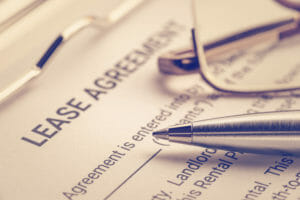In early 2016, the Financial Accounting Standards Board (FASB), the body that sets accounting principles for U.S. entities, released a new accounting standard on how businesses should account for their leases. Accounting Standards Update 2016-02, Leases (Topic 842), is effective for public entities for fiscal years beginning after December 15, 2018, and non-public entities must be ready to implement it for fiscal years beginning after December 15, 2019. This means that the deadline for
Your balance sheet will look different.
Under prior guidance, Generally Accepted Accounting Principles (GAAP) allowed companies to segregate their leases into two broad categories – capital leases and operating leases. A capital lease was recorded when an entity leased an asset for a long-term period, typically for the asset’s entire useful life. An operating lease was recorded when an entity leased equipment for a short-term period, and the equipment was upgraded or traded out frequently. A capital lease was recorded on the balance sheet as an asset and as an offsetting liability for the value of the remaining lease payments. An operating lease was recorded on the income statement as “lease expense” and left off the balance sheet altogether. Under the new accounting standard, these rules changed.
While the treatment of capital leases (renamed “finance leases”) generally stayed the same, operating leases must now also be recorded on the balance sheet. The lease will be recorded on the balance sheet as (1) a “right of use” asset to represent the company’s right to use the asset for the lease term, and (2) an accompanying liability for the present value of the remaining lease payments. The only leases that can remain off the balance sheet are short-term leases. Short-term leases must generally be less than 12 months in duration and there cannot be an implied obligation or expectation to renew the lease at the end of the period. These leases can be recorded as “lease expense” on the income statement, typically on a straight-line basis, when you make a payment.
You may need new software.
As you begin to implement these new rules, you may find that you need new or different software to help you. Not only will you need to calculate the value of your lease payments, but you will also need to collect information that you can use to fulfill the disclosure requirements of Topic 842. Both quantitative and qualitative disclosures about your leases must be reported in the footnotes to the financial statements, including the following information:
- How you identify a lease
- A description of each different type of lease
- Quantitative information about the different types of leases, including the value of the remaining payments, the portion of the lease that represents non-lease components (such as installation or maintenance), or how much of the standard rate has been discounted
-
Acknowledgement of subleases to your subcontractors or any leaseback agreements - Terms and conditions of lease agreements, including the interest rate, discount rate, due date, prepayments allowed, etc.
- Assumptions made on valuing variable lease payments
- Options available for each lease, including options to extend or terminate early
- Accounting policy election for the short-term lease exemption.
When reviewing lease accounting software, don’t focus on costs alone. Choose
You may need to review your debt covenants.
The balance sheet will look different going forward; both assets and liabilities will increase as a result of recording substantially all leases under Topic 842. These changes may also have an impact on certain financial ratios. As contractors, your bankers or bonding agents expect you to maintain certain financial ratios. Therefore, the new leasing standard may put you at risk of not satisfying certain financial covenants or not meeting required financial ratios. Return on assets (ROA), for example, shows the percentage of profit you earn (“net income”) in relation to your resources (“total assets”). When your assets increase as a result of this new leasing standard, your ROA ratio will decrease. If your bank requires a certain ROA to continue financing your projects, you may
Contractors may be affected more than the average business.
Quite often, contractors lease high-value equipment to use on their projects, so this accounting standard change is likely to affect contractors more acutely than other entities.

